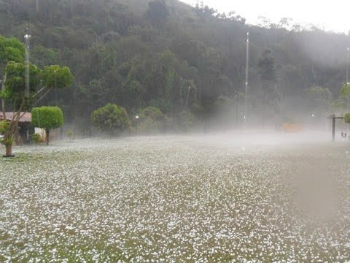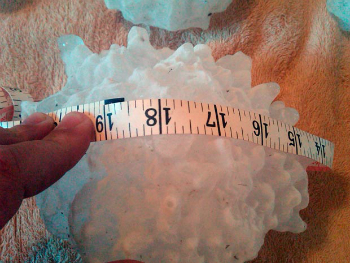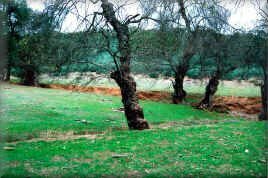Hail is a type of rain characterized by the precipitation of spherical ice boulders.
Therefore, unlike rain, in which water is in a liquid state, in this case, water is in a solid state.

hailstorm
Why does it rain hail?
Unlike common water precipitation, hail is formed above clouds where the temperature is very low. Therefore, this water is solidified and precipitates as hail.
It is made up of specific clouds called “cumulonimbus” that form mainly in the tropics.
Hailstones vary in size and are usually between 0.5 and 5 centimeters in diameter. There are cases where they are larger and weigh up to 0.5 kilos. If the hailstone is larger than 5 centimeters it is called “hail”.
Often hail can be so intense and accompanied by strong winds. There are cases where the stones are very large and can damage objects, such as cars, or even injure people. So when it's raining hail, it's important to stay indoors.

Hail damage in Nebraska (USA)
In addition, they can compromise crops and even reach animals that are in uncovered spaces. This can directly affect the economy of the affected location.
Hailstorms don't usually last long, that is, they happen in 50 minutes at most, however, they can cause several damages.
Read too: Natural Disasters.
Curiosities
The largest hail that has ever been recorded in history fell on Vivian, South Dakota, United States. It fell in July 2010 and had a size of 20 centimeters and weighed 880 grams.

Giant Hail in South Dakota, United States
Already in 2013 the hailstorm that hit some Texas cities in the United States, damaged the roofs of houses and cars.
There was also another occurrence of giant hail in January 2017 in the Argentine province of Entre Rios. The recorded hail reached up to 10 centimeters. In addition, it devastated crops, houses and killed several animals.
And what is Snow?
 snowy region
snowy region
While hail falls in the form of stones, snow falls in flakes or ice crystals. Another difference between them concerns the coloration, as hail is more transparent, while snow is white.
Hail or Granite?
There are people who, when talking about this type of precipitation, use a similar term, however, with a very different meaning.
As we saw above, hail is a type of precipitation with ice cubes. already the granite is a type of rock formed by several minerals.
Read too:
- Physical States of Water
- Types of Rains
- water cycle


